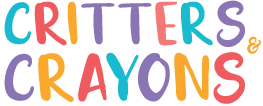Our children have never known a world without the internet. For children and teenagers, cyberspace plays a part in their education, social interaction, work and entertainment.
But the online world is not devoid of risks. Kids venturing into cyberspace are exposed to a host of potential dangers ranging from scams and swindles to schoolyard bullies. On the extreme end of the spectrum are dangerous predators, some of whom search for victims on social networking sites.
On the face of it, this can all seem a bit scary to parents. But – just as in the real world – a little bit of common sense and a few simple rules can go a long way in making your kids safer online.
Department of Education and Child Development (DECD) senior online consultant Henry Legedza says it’s up to parents to provide clear boundaries and guidance to children, who often have endless knowledge of technology but limited understanding of the risks. “It comes down to the old cliché: sitting down and talking to your kids and making sure that there’s an education process in place for them. But you also need to listen: if your kids come to you with issues and questions, don’t just fob them off and say ‘it’s only social media’. You need to treat it seriously.”
Cyber safety experts agree on a few rules and guidelines, which parents should communicate clearly with their children. Giving out social networking passwords is a big no no, as is sharing personal information such as telephone numbers, addresses and school names online. Children should be cautioned against befriending anyone they don’t know (there are an estimated 83,000 fake profiles on Facebook) and flirty and suggestive photos should never be posted, even in private messages and texts. Children should talk to their parents about suspicious characters and bullying they encounter online and, if possible, parents should print and store any interactions with online bullies.
Parents can also draw up their own set of rules and guidelines to supplement these mainstays. Henry Legedza had two children who grew up in the early stage of the social media explosion, and in retrospect he says he would have done some things differently. “One of the things I ruled was giving them computer access in their rooms,” says Henry. “Invariably when I wandered in (to my daughter’s room) there was a Facebook window open and a MySpace window alongside the homework she was meant to be doing. Eventually, we ironed out a few rules, which she was happy with. I think childrens don’t mind some boundaries.”
Henry says internet filters – which can be set to block a range of internet sites and content from social media to pornography – can be a good way of limiting what childrens do online. “You can set the filters depending on how much you want to tighten or loosen [their access to sites],” he says. “In most cases now, filters are not expensive, and in some cases they’re even free.”
Adelaide mother Sonya Ryan knows too well the risks posed by the internet. In 2006 her daughter Carly was murdered by an internet predator. Carly’s attacker had posed as an attractive 20-year-old musician called Brandon Kane, who in fact turned out to be 50-year-old paedophile Gary Francis Newman. Pretending to be the Brandon’s father, Newman lured Carly to a secluded beach in Port Elliott, where he murdered her.
Sonya, who founded the Carly Ryan Foundation to promote better understanding of cyber safety, says there are an estimated 500,000 predators online each day.
To protect children from such threats, Sonya stresses that it is vitally important that parents learn about the social media their children are using. With familiarity, she says, comes an understanding of the risks and the various privacy options. “If you don’t know how Facebook, Instagram, WordPress or Pinterest work, you need to get online and Google them,” she says. “So many parents, teachers and principals have no idea how these different mediums work.”
Sonya says it’s common for children to add ‘randoms’ on Facebook. This is a bad idea. “They think it defines them as a person to have 1,000 friends on their Facebook page – it makes them feel popular,” she says. “I challenge them to go through their friends and delete people they don’t know – they’re potentially opening their house up to so many strangers.”
Parents creating their own Facebook account is an excellent idea, says Sonya, but getting too familiar with your child’s online profile is usually not. “Big tip – don’t write on your children’s wall. Make an agreement: ‘I’ll have a Facebook account and be your friend, but if I do, I promise I won’t write on your wall,’” she says. “If you can promise that, your children will be a lot more open to the idea.”
It’s all part of building good lines of communication, says Sonya. If children and teens feel they can trust their parents, they’ll be more likely to open up about their online activities.
“You need to let your children know that no matter what happens, they can come to you and you’ll help them to resolve it – not just panic and cut the internet off,” says Sonya. “That’s a biggie. A lot of the emails we get from kids say ‘something happened to me online, I don’t want to tell mum and dad because they’ll just yell at me and cut the internet off’.”
In an age where a lot of social interaction is digital and impersonal, face to face time between parents and kids is vital, says Sonya. “We’re so busy rushing about that sometimes we forget to stop and just engage. But it’s important to make the time to have conversations with your children,” she says.
“Kids often feel like they’re not heard. It’s so important that as a parent you take the time to listen if your child has something to say to you. It could be something very important.”
